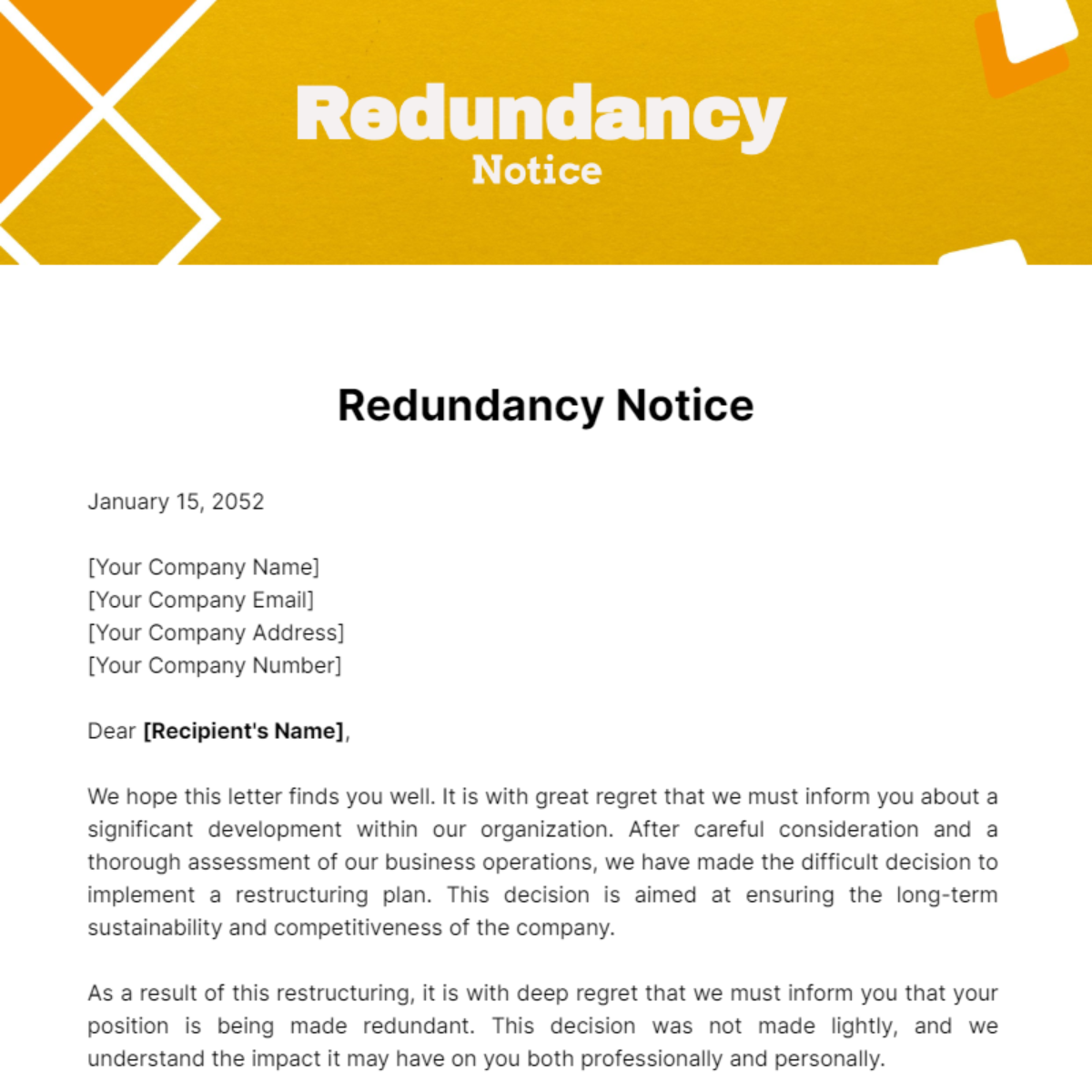Clarified: If a Company Goes Bust Who Pays Redundancy in the UK?
Clarified: If a Company Goes Bust Who Pays Redundancy in the UK?
Blog Article
Checking Out the Interaction In Between Business Redundancy and Organizational Flexibility for Future Development
In the dynamic landscape of today's service globe, the detailed relationship between business redundancy and organizational versatility arises as a critical variable for sustained development and success. Firms commonly face the challenge of striking a fragile balance between maintaining a degree of redundancy to minimize risks and fostering flexibility to respond swiftly to the ever-evolving market demands.
Importance of Firm Redundancy
Company redundancy is a critical element that boosts business resilience and reduces functional risks. By integrating redundancy actions within the organizational structure, firms can better hold up against unpredicted interruptions and fluctuations in the business atmosphere. Redundancy serves as a calculated barrier, allowing companies to adapt and react successfully to unexpected difficulties without compromising essential operations.
One key aspect of the value of company redundancy is its duty in making sure connection throughout times of dilemma. When confronted with sudden changes or emergencies, redundant systems, sources, or employees can tip in to keep critical features and protect against prevalent disruptions. This continuity not just safeguards the business's track record and customer count on however likewise decreases monetary losses and functional downtime.

Methods for Business Versatility

Developing versatile business structures that permit for fast modifications to market dynamics and client requirements is important for remaining affordable in a rapidly developing atmosphere. By proactively recognizing possible interruptions and chances, organizations can proactively flourish and adjust in an ever-changing organization landscape.
Harmonizing Redundancy and Flexibility
Achieving an unified stability in between operational redundancy and organizational adaptability is paramount in navigating the intricacies of a dynamic organization setting. Redundancy within a firm provides a safeguard, making sure continuity and stability in operations. Nevertheless, an extra of redundancy can result in inefficiencies and hinder flexibility to changing market conditions. On the other hand, business versatility enables companies to react quickly to outside disruptions and confiscate brand-new opportunities. Striking the best equilibrium between redundancy and versatility is a delicate process that requires a deep understanding of the company's objectives, market dynamics, and risk tolerance.
To achieve this this post balance, business need to carry out routine evaluations of their operations to find more information determine areas where redundancy is necessary for threat mitigation and where flexibility can drive advancement and development. Implementing flexible structures, promoting a society of continual discovering and improvement, and motivating open communication throughout all levels of the organization are vital methods to balance redundancy and adaptability effectively. By straightening these two important aspects, business can place themselves for sustainable development and success in an ever-changing business landscape.
Situation Research Studies on Adjustment Success
In checking out circumstances of effective organizational adaptation, it comes to be apparent that the interplay in between operational redundancy and versatility is a specifying factor in forming resilient services. A DVD rental solution, Netflix showed amazing versatility by transitioning into a streaming platform when digitalization interrupted the industry. These situation research studies highlight the value of operational redundancy combined with organizational versatility in fostering long-lasting development and competition.
Building Durability for Future Development
Structure strength for future growth requires a calculated placement of functional procedures with market characteristics and arising patterns. Firms must adapt to transforming settings by fostering a society of flexibility, technology, and continuous enhancement.
In addition, cultivating strong relationships with stakeholders, such as consumers, workers, vendors, and the area, is essential for weathering unpredictabilities and keeping trust fund and support throughout stormy times. Efficient interaction and transparency play an important function in building strength, as they assist assist in and line up assumptions partnership in navigating unpredictabilities.
Additionally, organizations need to focus on understanding and advancement efforts to upskill employees and equip them with the necessary devices to adjust to changing situations. By spending in their workforce, companies can enhance their versatility and dexterity, eventually enhancing their durability for lasting future development.
Final Thought

In the vibrant landscape of today's company globe, the complex partnership between firm redundancy and business adaptability emerges as a crucial aspect for continual growth and success. Firms frequently deal with the obstacle of striking a fragile equilibrium between keeping a degree of redundancy to minimize dangers and promoting versatility to react promptly to the ever-evolving market needs.To attain this equilibrium, companies need to conduct routine evaluations of their procedures to determine areas where redundancy is required for risk mitigation and where flexibility can drive technology and development.In verdict, the interaction in between company redundancy and organizational adaptability is important for future development. Building strength with a mix of redundancy and flexibility will guarantee that firms are prepared for the challenges of the future.
Report this page